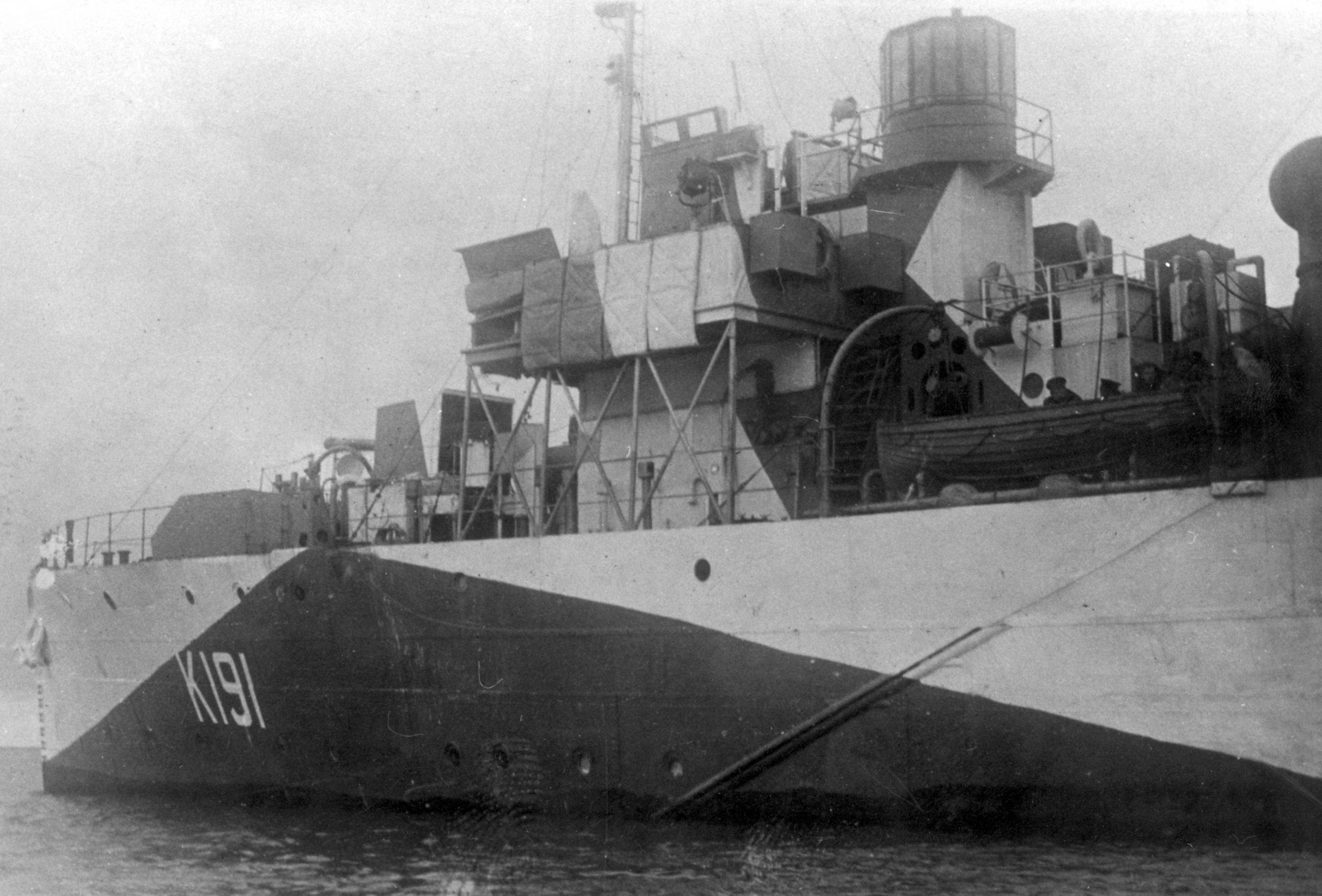
The port side of the Canadian Mayflower corvette as seen from the boat from the surface of the water.
The Canadian HMCS Mayflower had the board number K191, class – Flower. It was under construction in Montreal (Canada).
Mayflower corvette, construction began on February 20, 1940, launched on July 03, 1940, accepted into the Canadian Navy on May 15, 1941.
Mayflower corvette, main characteristics: displacement – 925 tons. Length – 62.4-63.4 m, draft – 3.51-3.35 m (depending on modifications), width – 10.06 m. Power plant – two boilers, one propeller. The maximum speed is 16 knots. Cruising range at a speed of 12 knots – 3500 miles. The crew is 85-90 people.
The armament: one 101.6-mm cannon (BL 4 inch Mk IX) at the bow, at the stern – four 12.7-mm Vickers anti-aircraft machine guns (Vickers 0.5) or one 40-mm Pom-pom anti-aircraft gun (QF 2 pounder 1,6 “Pom Pom AA gun), along the sides – two twin 7.7-mm anti-aircraft machine guns Lewis (Lewis 0.303) or two 20-mm automatic anti-aircraft guns “Oerlikon” (Oerlikon). Anti-submarine weapons: two aft installations for dropping depth charges (40-70 bombs), 2-4 onboard installations (Mk.II depth charge throwers).
The Mayflower corvette was used in the Atlantic to escort Allied sea convoys between Canada and Great Britain (in particular, in 1941 for convoys HX136, HX143, ON8, SC44, ON19, SC49, SC55, ON42; in 1942 – SC71, HX177, ON77, HX184 , ON91, HX190, ON102, HX196, ON114, SC95, ON125, SC100, ON135).
The Mayflower corvette was withdrawn from the Royal Canadian Navy on 31 May 1945 and transferred to the UK.
Photo source: Defense Canada.